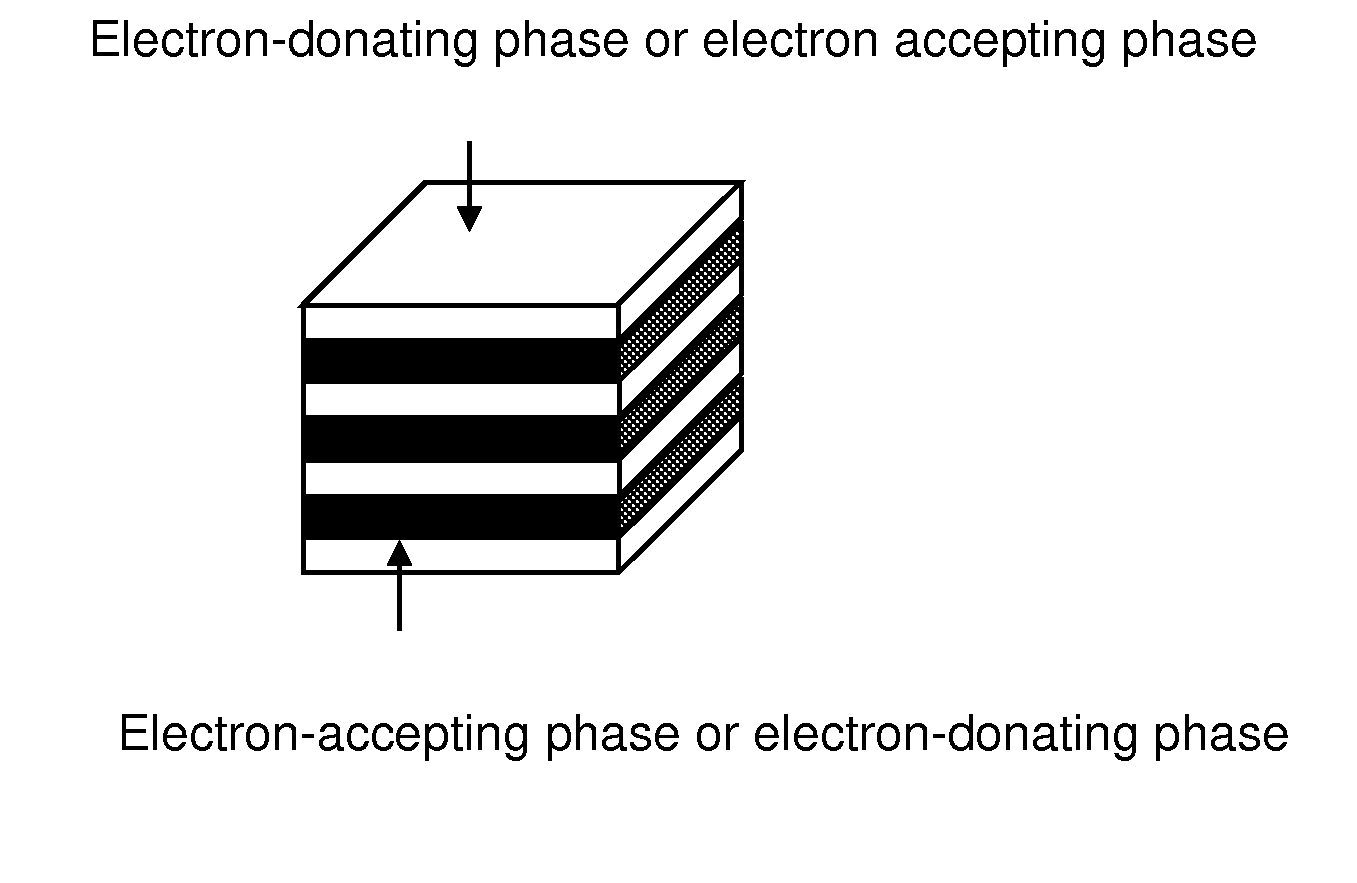Method for manufacturing nano-array electrode and photoelectric conversion device using same
a technology of photoelectric conversion device and nano-array electrode, which is applied in the field of nano-array electrodes, can solve the problems of affecting the enhancement of productivity, the deactivation of the elementary excitation state of the electron, and the difficulty in accurately controlling the structure of the particle, etc., and achieves the effect of high performan
- Summary
- Abstract
- Description
- Claims
- Application Information
AI Technical Summary
Benefits of technology
Problems solved by technology
Method used
Image
Examples
example 1
[Manufacture of an Anodic-Oxide Porous Alumina Film]
[0196]An aluminum substrate (purity: 99.99%, manufactured by TOYO ALUMINIUM K.K.) was subjected to constant-current electrolysis at a temperature of 70° C. in a sulfuric acid-phosphoric acid mixed solution (85% 330 mL phosphoric acid, 75 mL concentrated sulfuric acid, 15 mL ethylene glycol, and 80 mL water) for 5 minutes by applying a current of 250 mA / cm2 to the aluminum substrate used as an anode and a black carbon used as a cathode and then washed with water and dried. An anodic oxidization was conducted at a temperature of 16° C. in an aqueous solution containing 0.5 mol / L oxalic acid for 5 hours by applying a voltage of 40 V to the aluminum substrate used as an anode and a black carbon used as a cathode. Thereafter, the aluminum substrate was dipped into a chromic acid-phosphoric acid mixed solution (6 g chromic oxide, 20 g phosphoric acid, and 300 g water) at a temperature of 50° C. for 12 hours and then washed with water and...
example 2
[Manufacture of an Anodic-Oxide Porous Alumina Film]
[0200]An aluminum substrate (purity: 99.99%, manufactured by TOYO ALUMINIUM K.K.) was subjected to constant-current electrolysis at a temperature of 70° C. in a sulfuric acid-phosphoric acid mixed solution (85% 330 mL phosphoric acid, 75 mL concentrated sulfuric acid, 15 mL ethylene glycol, and 80 mL water) for 5 minutes by applying a current of 250 mA / cm2 to the aluminum substrate used as an anode and a black carbon used as a cathode and then washed with water and dried. An anodic oxidization was conducted at a temperature of 16° C. in an aqueous solution containing 0.5 mol / L oxalic acid for 5 hours by applying a voltage of 40 V to the aluminum substrate used as an anode and a black carbon used as a cathode. Thereafter, the aluminum substrate was dipped into a chromic acid-phosphoric acid mixed solution (6 g chromic oxide, 20 g phosphoric acid, and 300 g water) at a temperature of 50° C. for 12 hours and then washed with water and...
example 3
[Manufacture of an Anodic-Oxide Porous Alumina Film]
[0204]An aluminum substrate (purity: 99.99%, manufactured by TOYO ALUMINIUM K.K.) was subjected to constant-current electrolysis at a temperature of 70° C. in a sulfuric acid-phosphoric acid mixed solution (85% 330 mL phosphoric acid, 75 mL concentrated sulfuric acid, 15 mL ethylene glycol, and 80 mL water) for 5 minutes by applying a current of 250 mA / cm2 to the aluminum substrate used as an anode and a black carbon used as a cathode and then washed with water and dried. An anodic oxidization was conducted at a temperature of 16° C. in an aqueous solution containing 0.3 mol / L sulfuric acid for 8 hours by applying a voltage of 25 V to the aluminum substrate used as an anode and a black carbon used as a cathode. Thereafter, the aluminum substrate was dipped into a chromic acid-phosphoric acid mixed solution (6 g chromic oxide, 20 g phosphoric acid, and 300 g water) at a temperature of 50° C. for 12 hours and then washed with water a...
PUM
| Property | Measurement | Unit |
|---|---|---|
| temperature | aaaaa | aaaaa |
| temperature | aaaaa | aaaaa |
| temperature | aaaaa | aaaaa |
Abstract
Description
Claims
Application Information
 Login to View More
Login to View More - R&D
- Intellectual Property
- Life Sciences
- Materials
- Tech Scout
- Unparalleled Data Quality
- Higher Quality Content
- 60% Fewer Hallucinations
Browse by: Latest US Patents, China's latest patents, Technical Efficacy Thesaurus, Application Domain, Technology Topic, Popular Technical Reports.
© 2025 PatSnap. All rights reserved.Legal|Privacy policy|Modern Slavery Act Transparency Statement|Sitemap|About US| Contact US: help@patsnap.com



